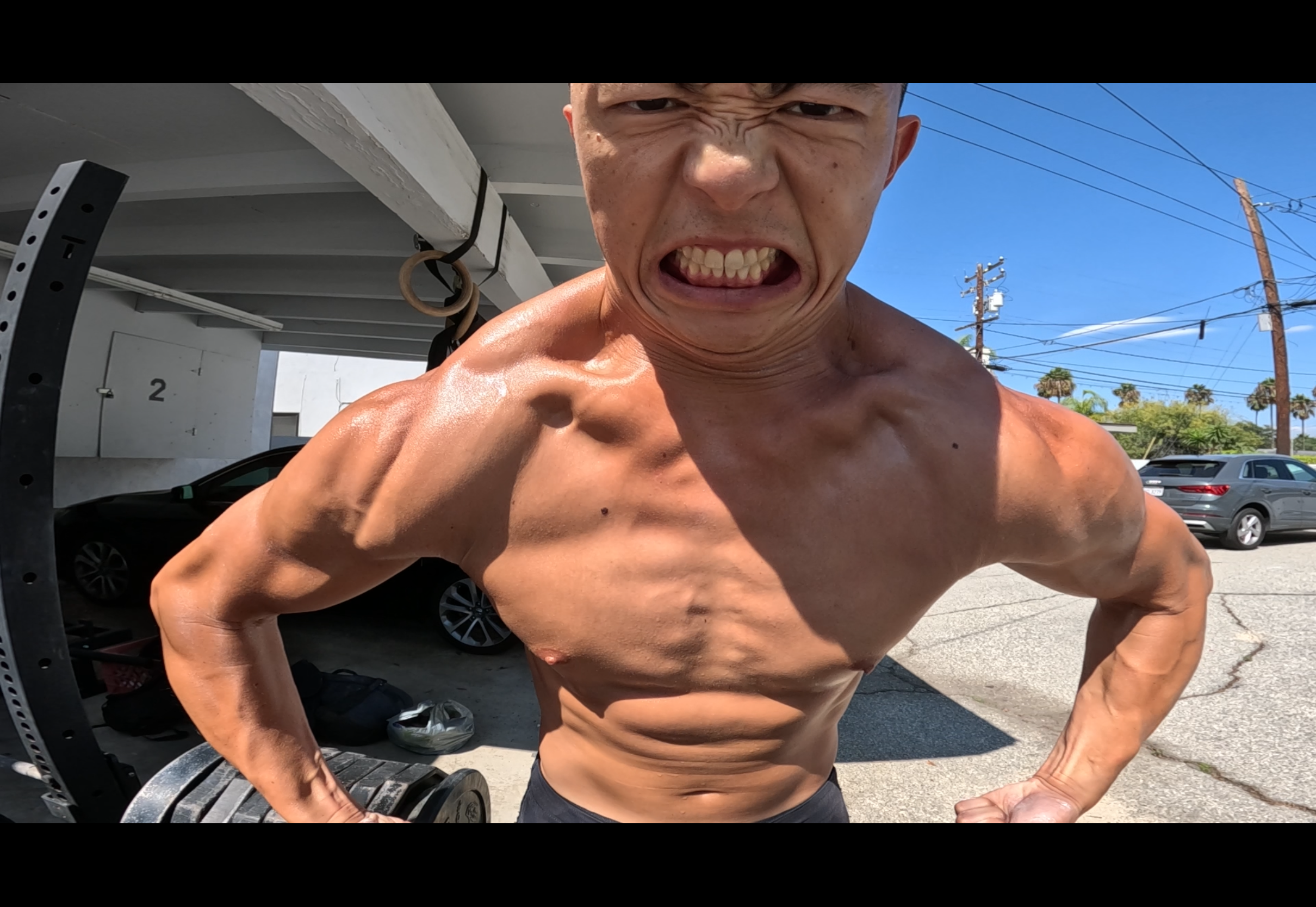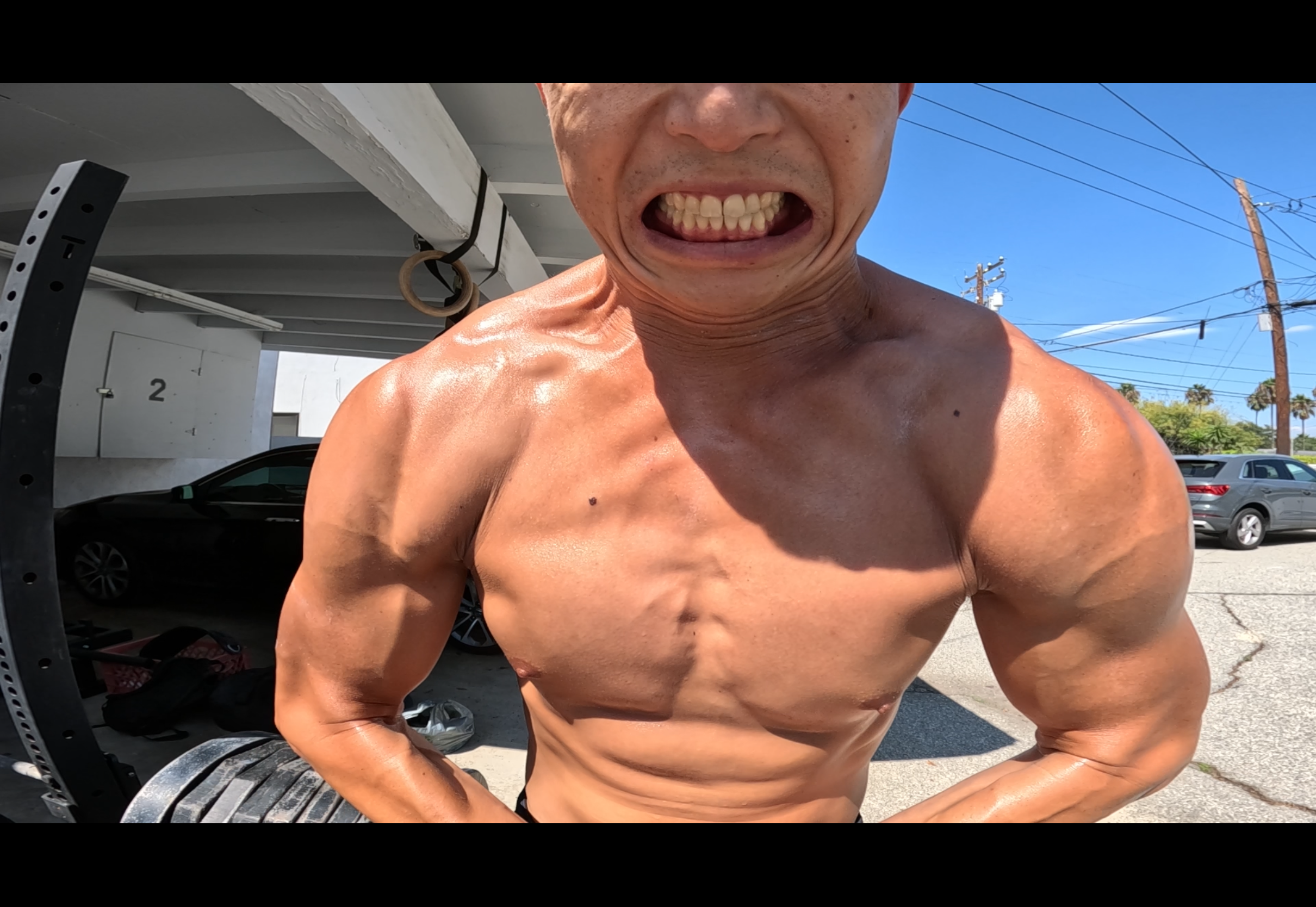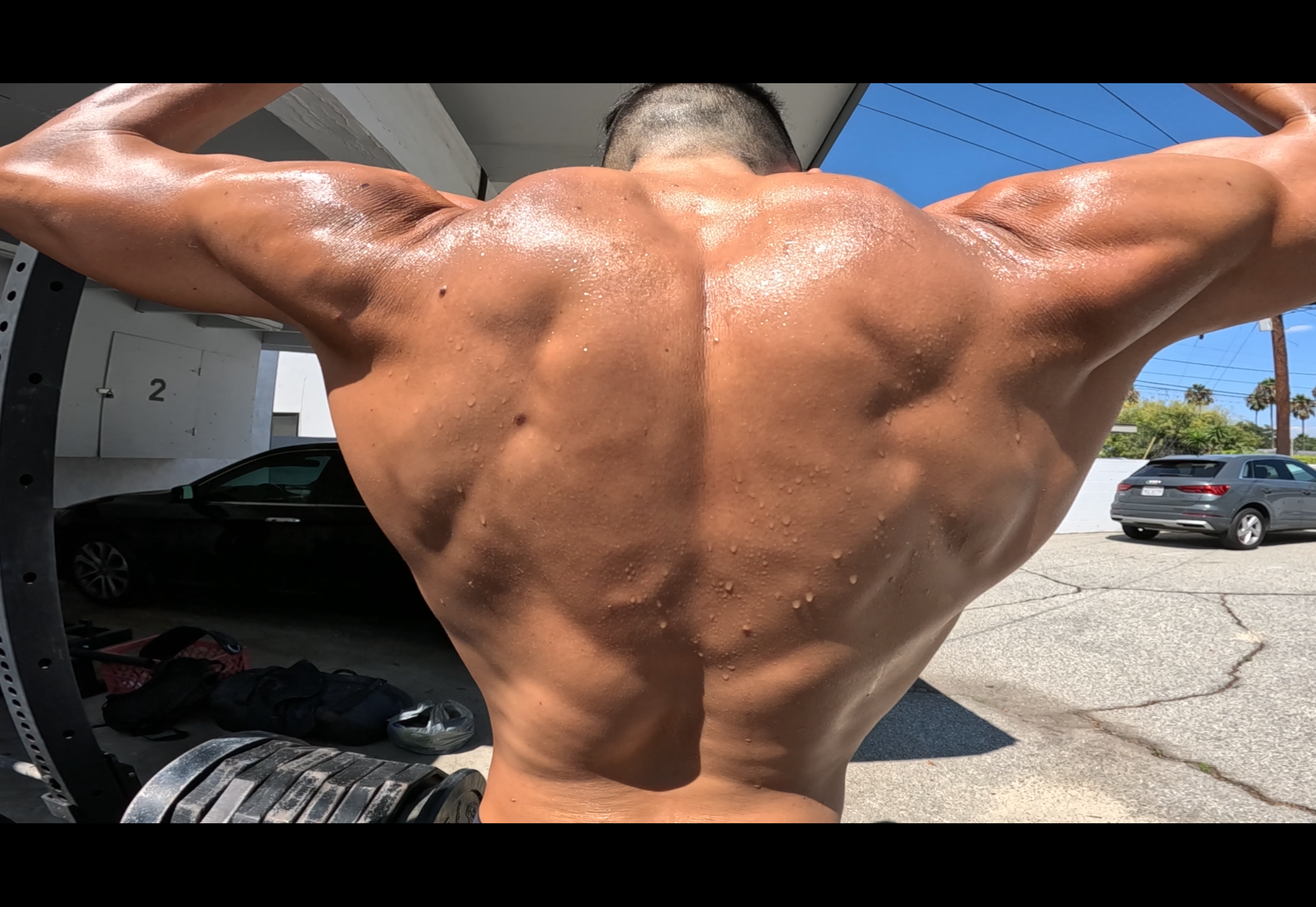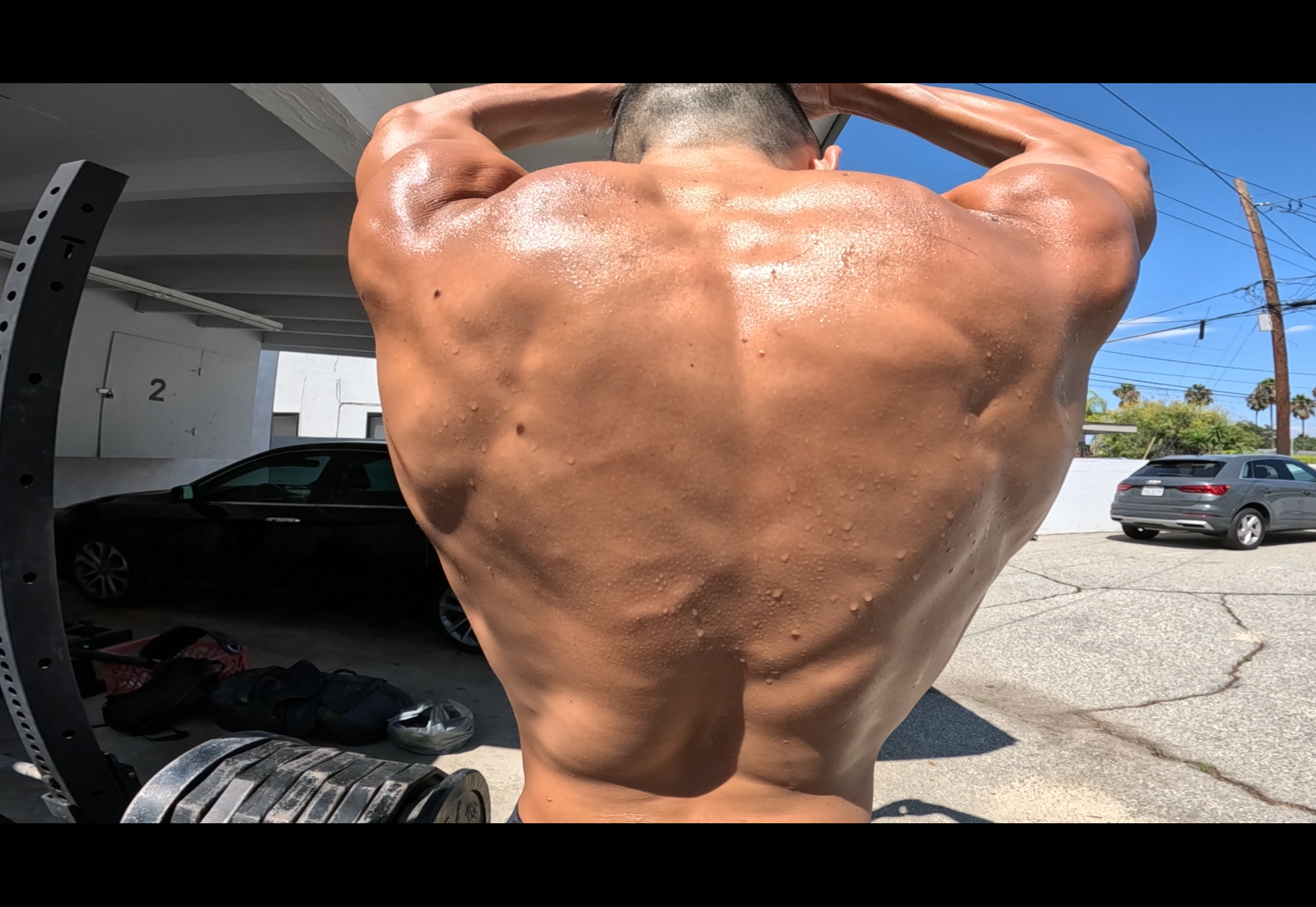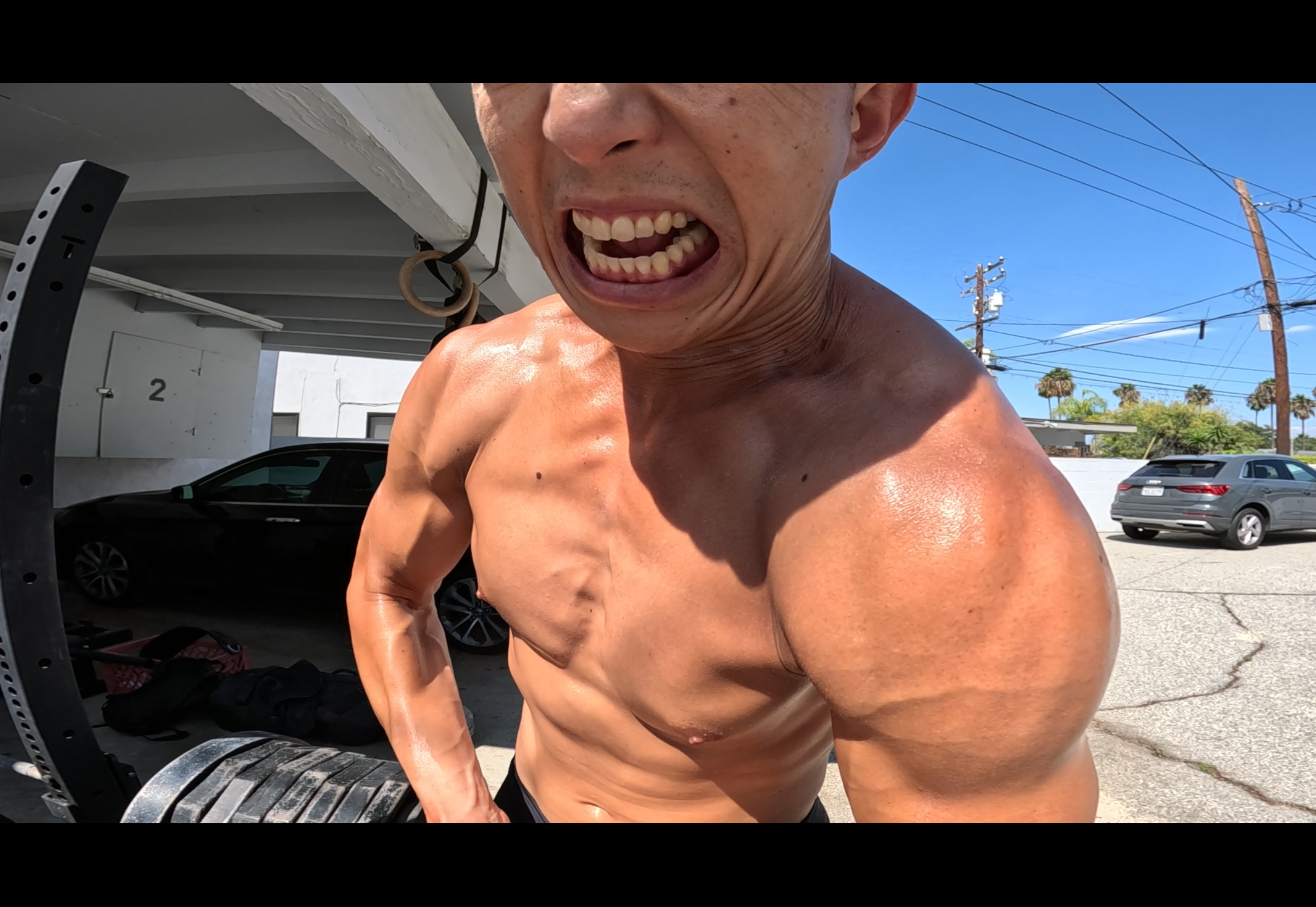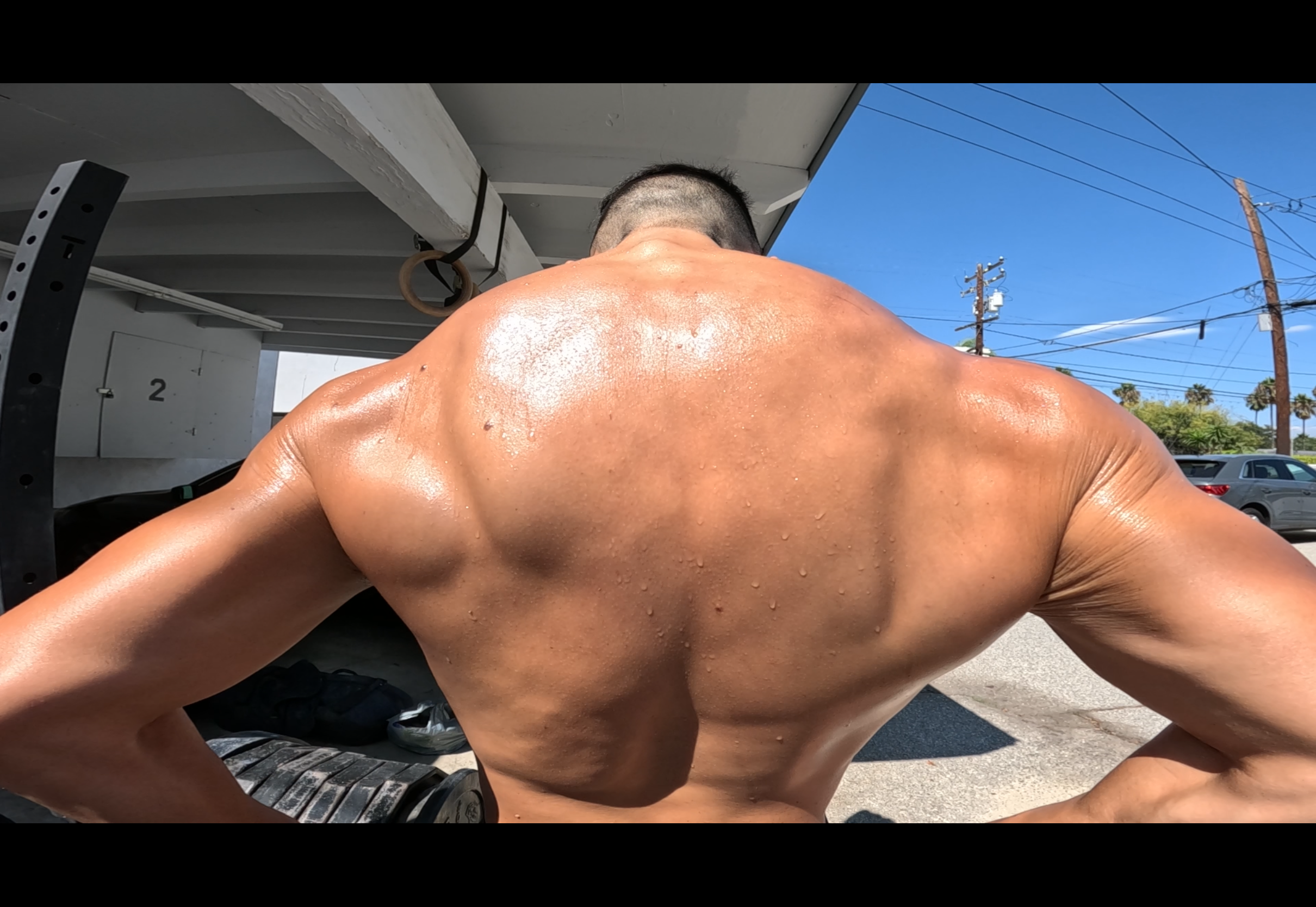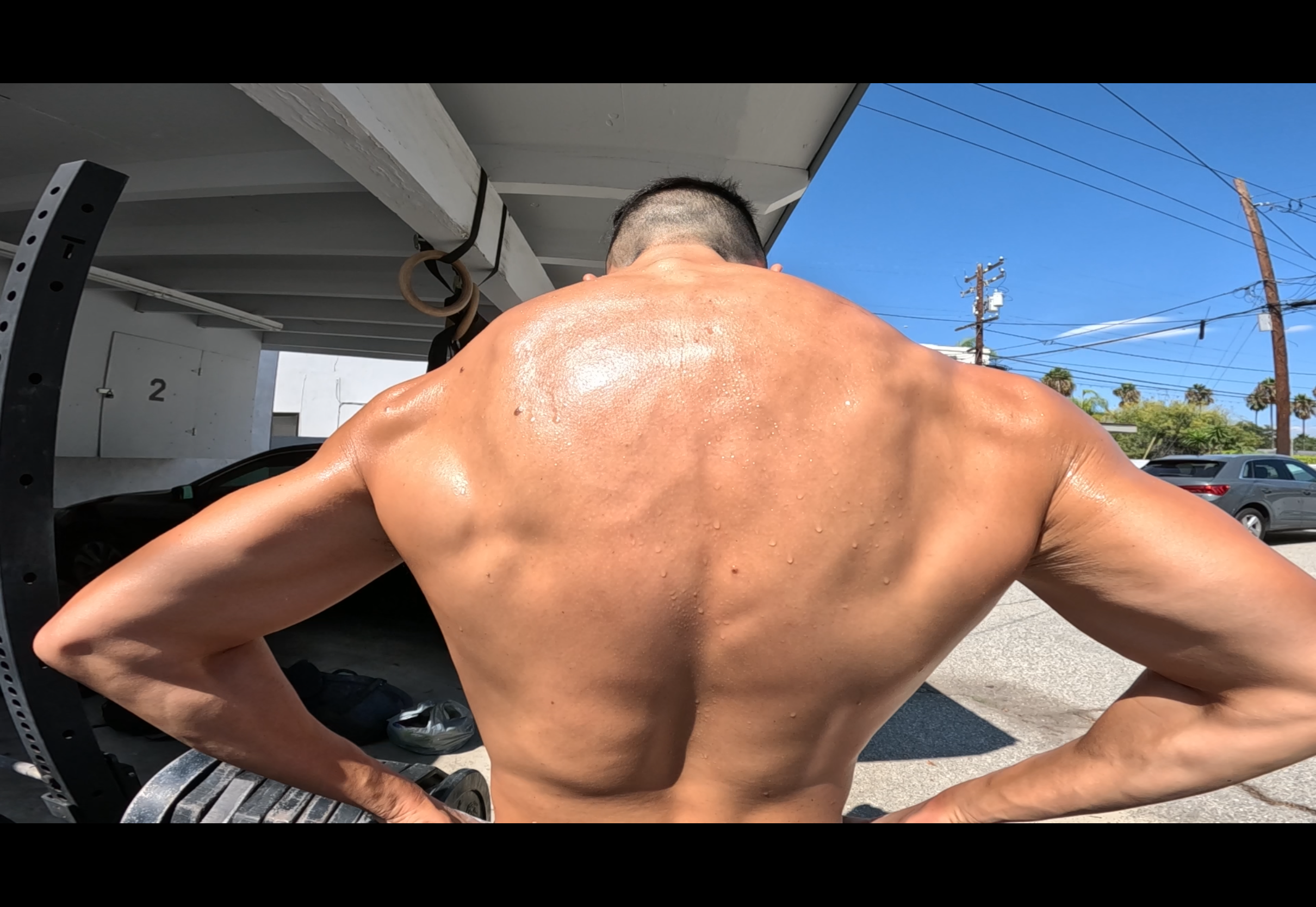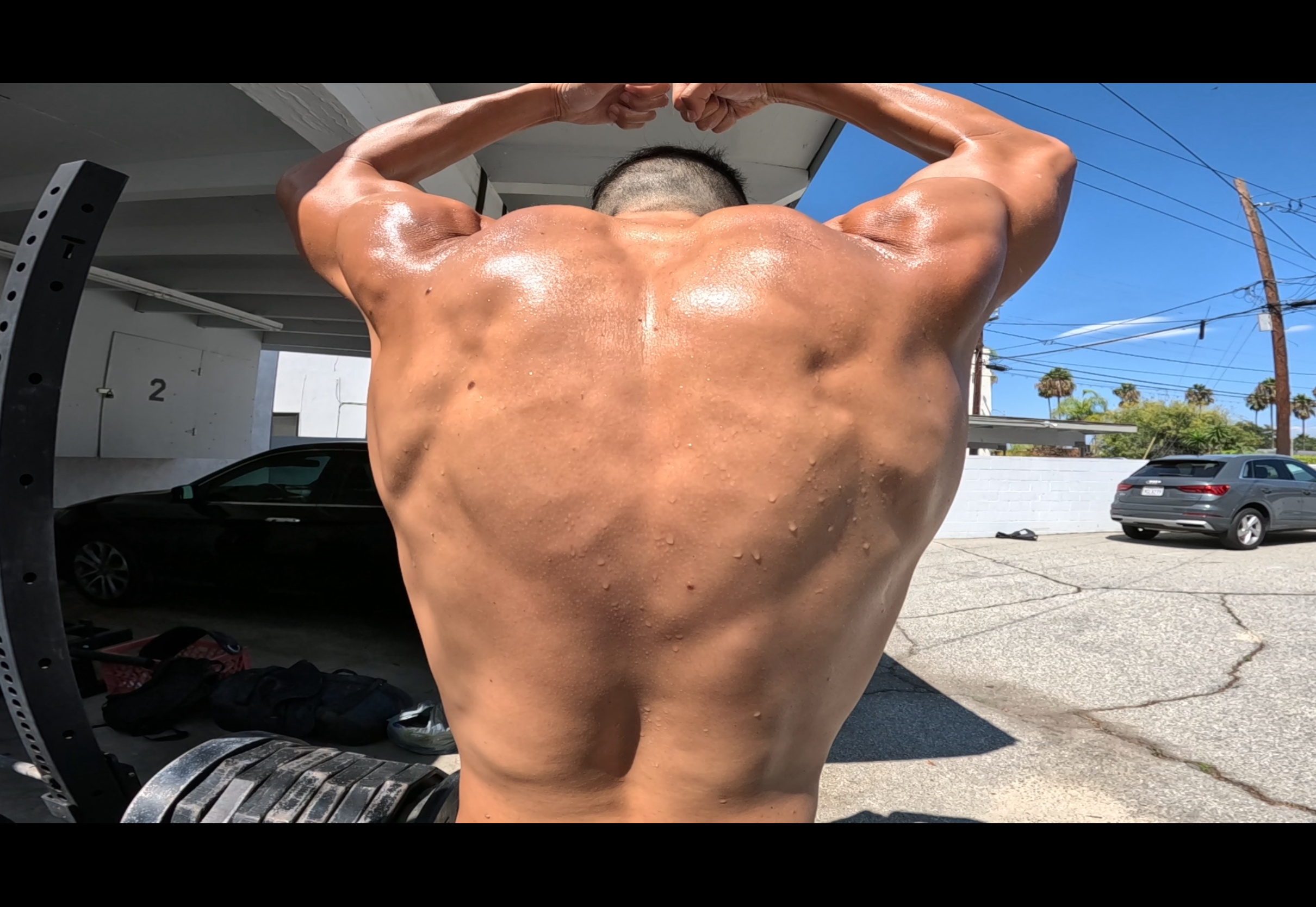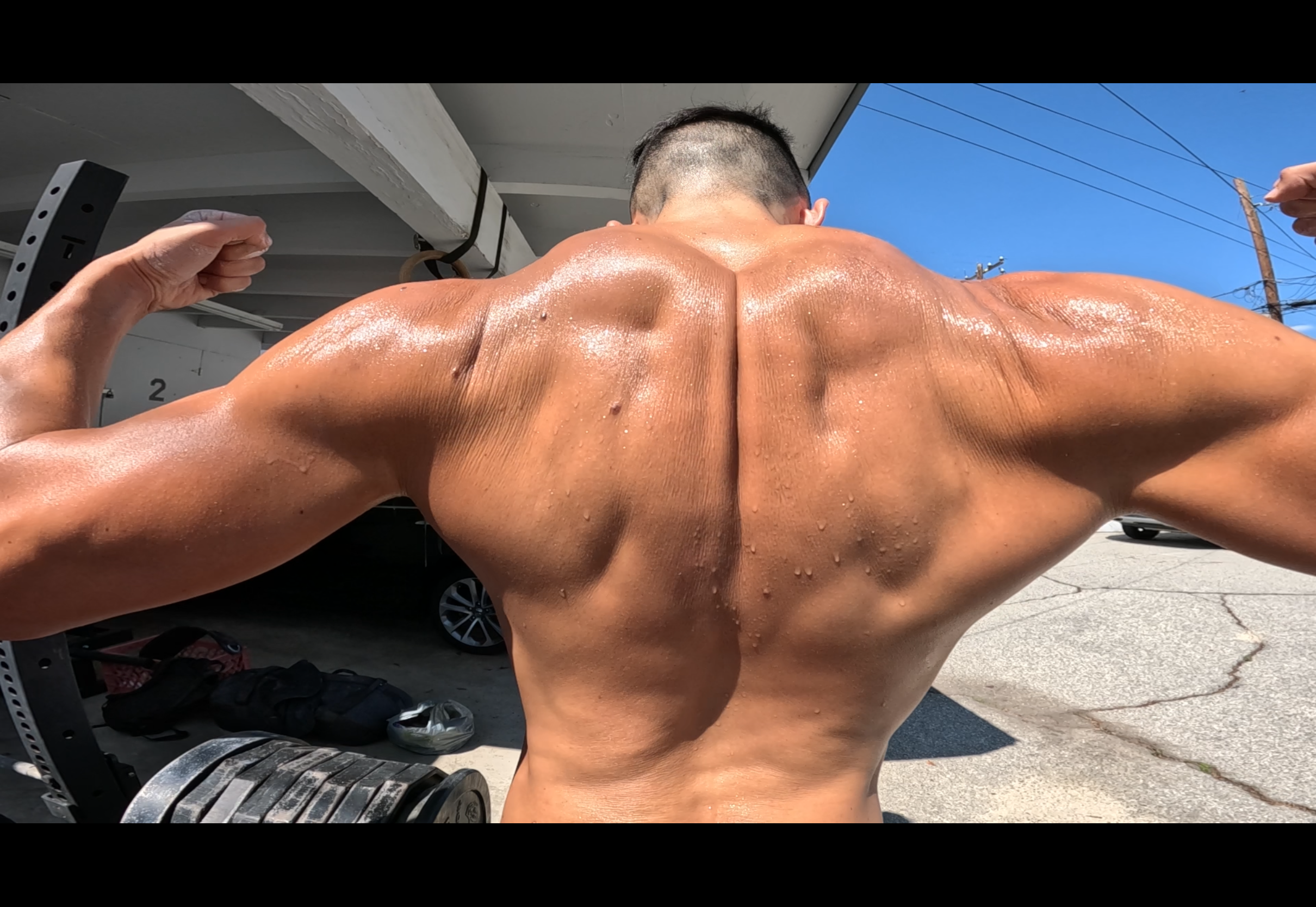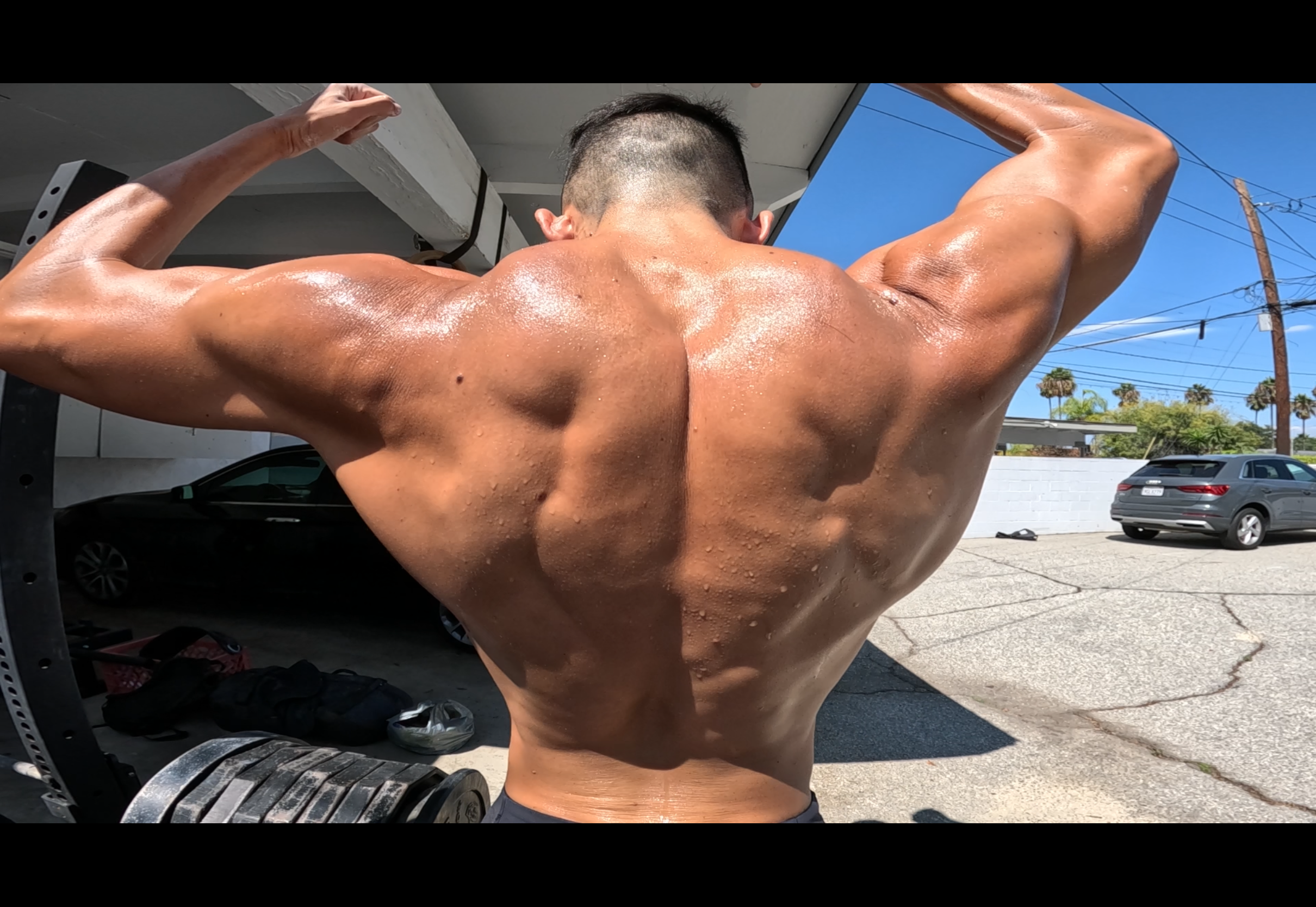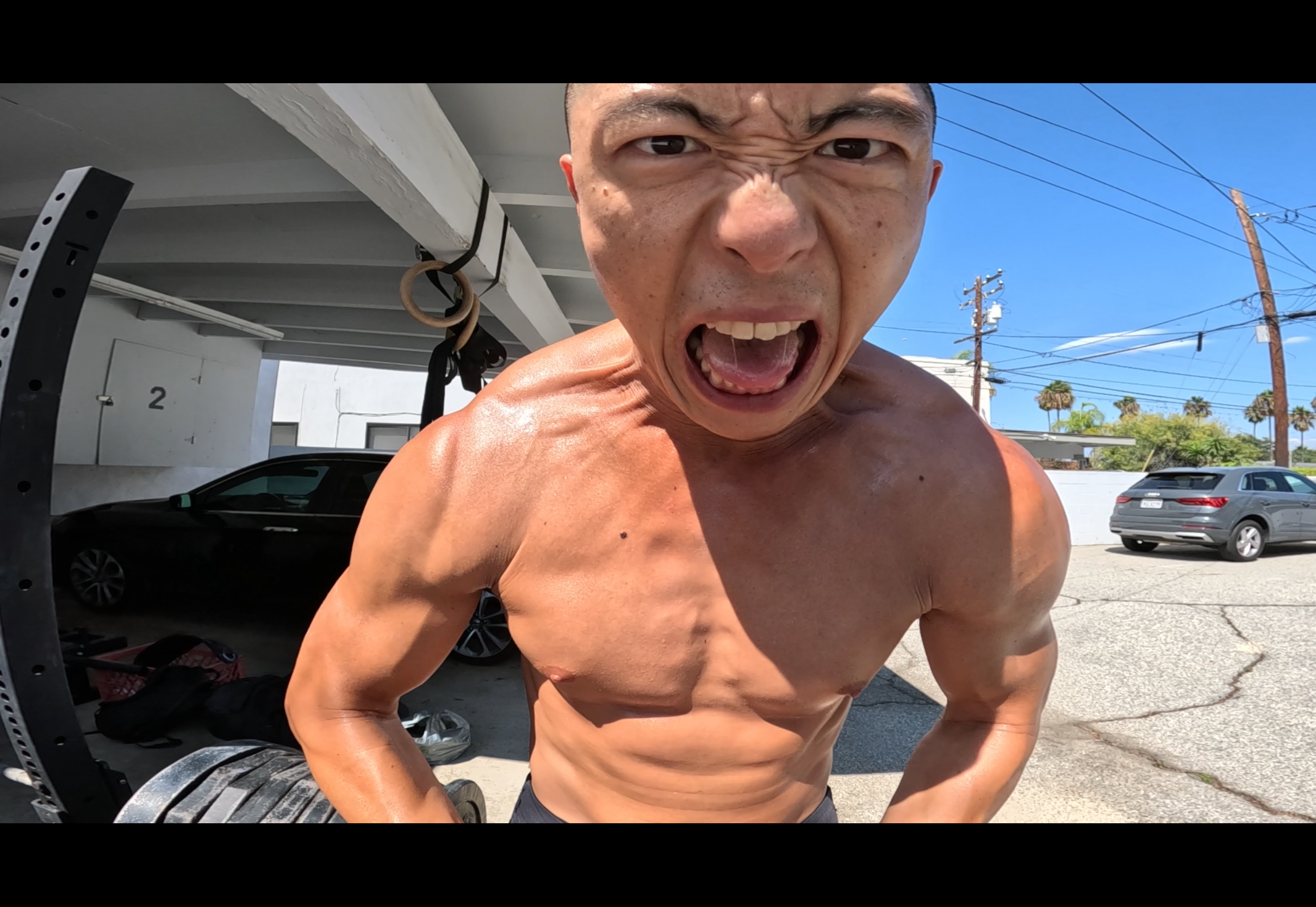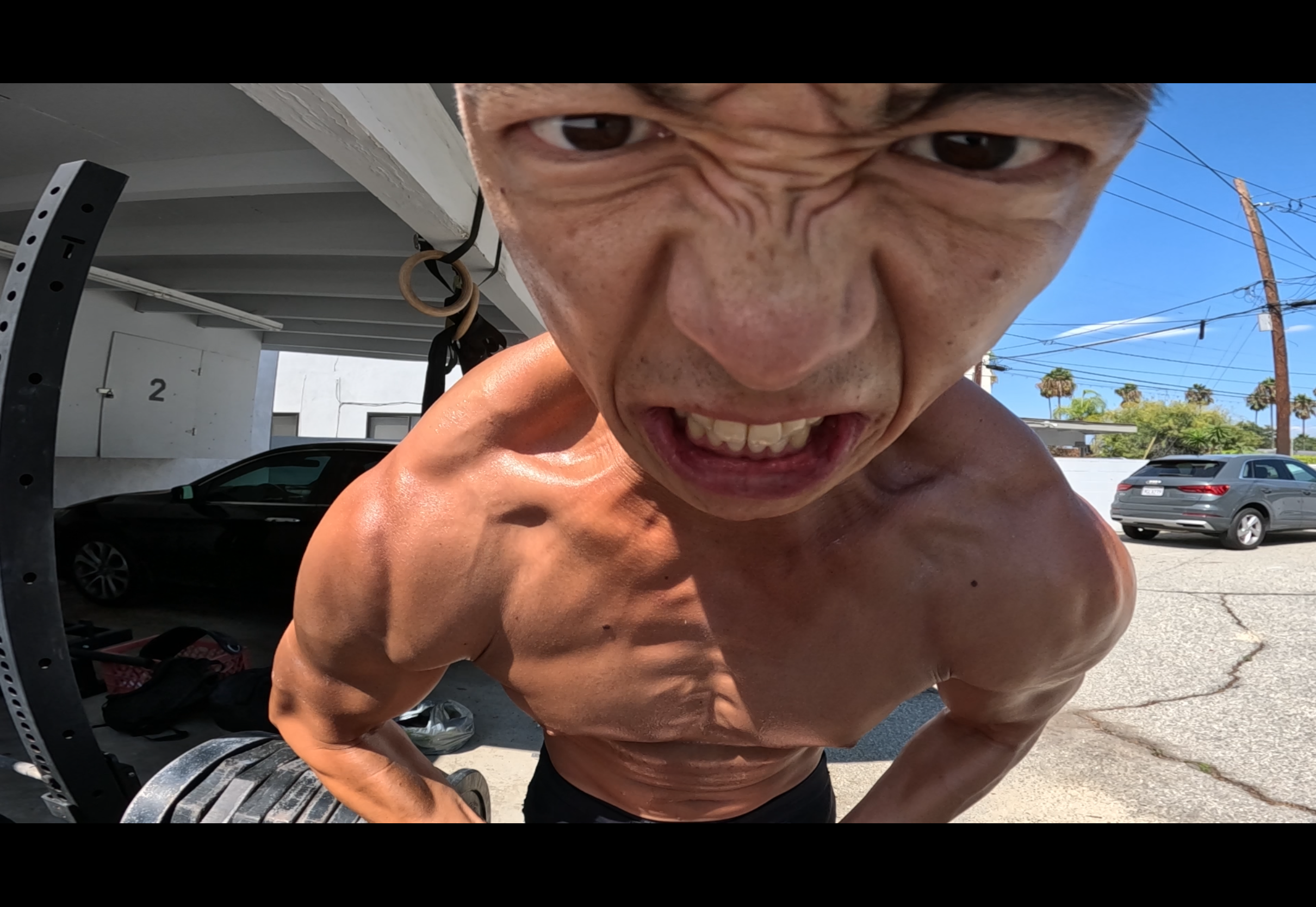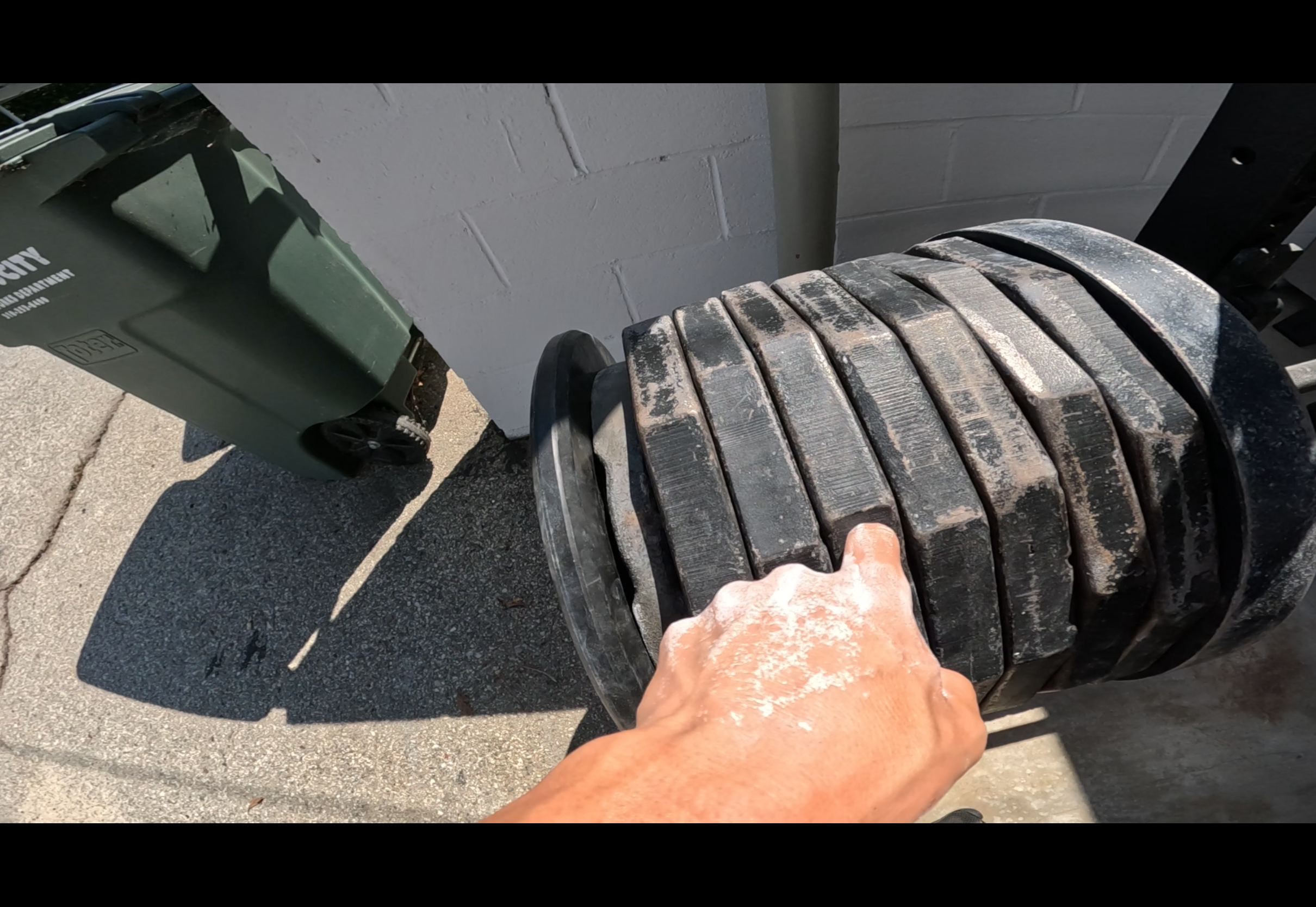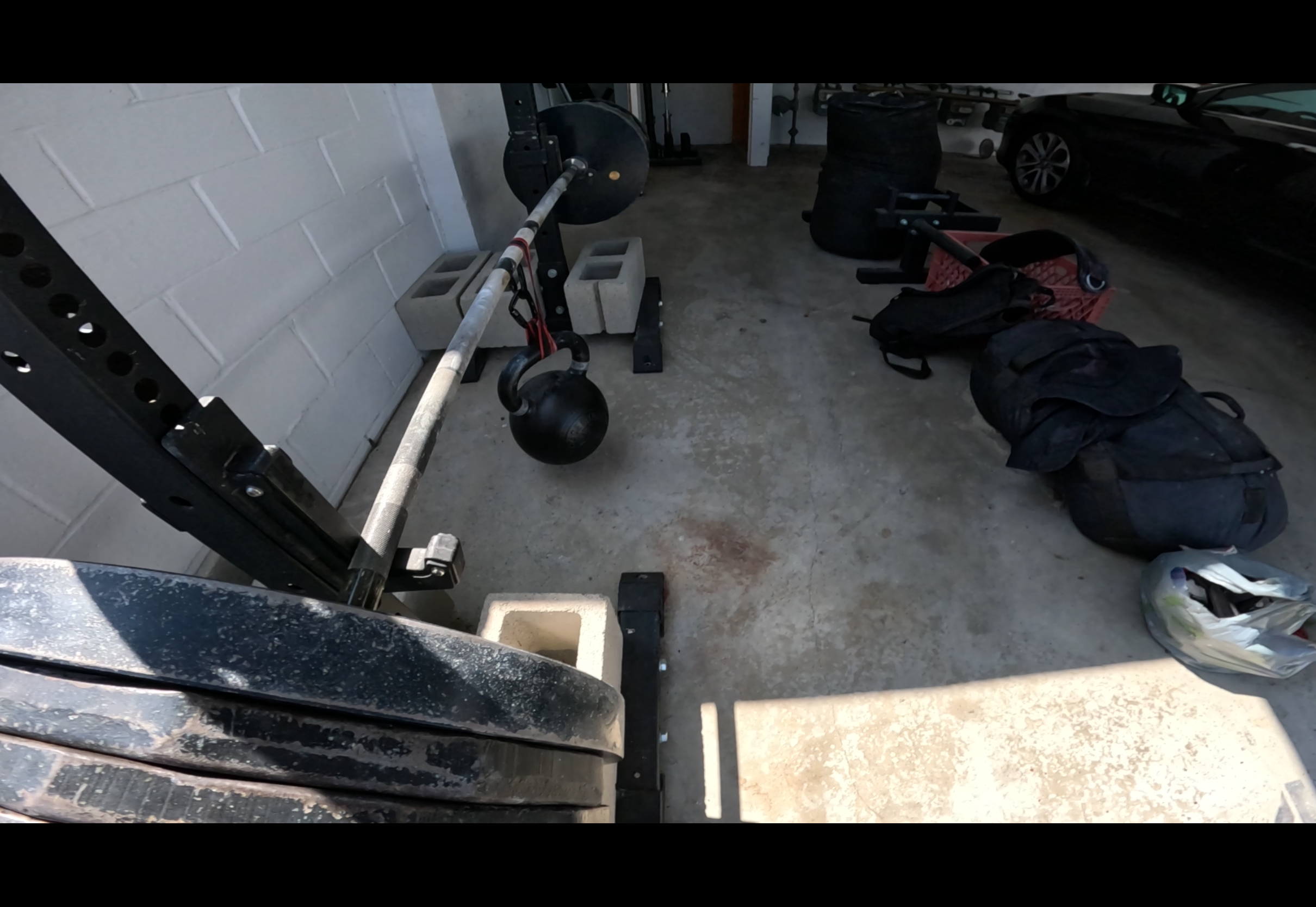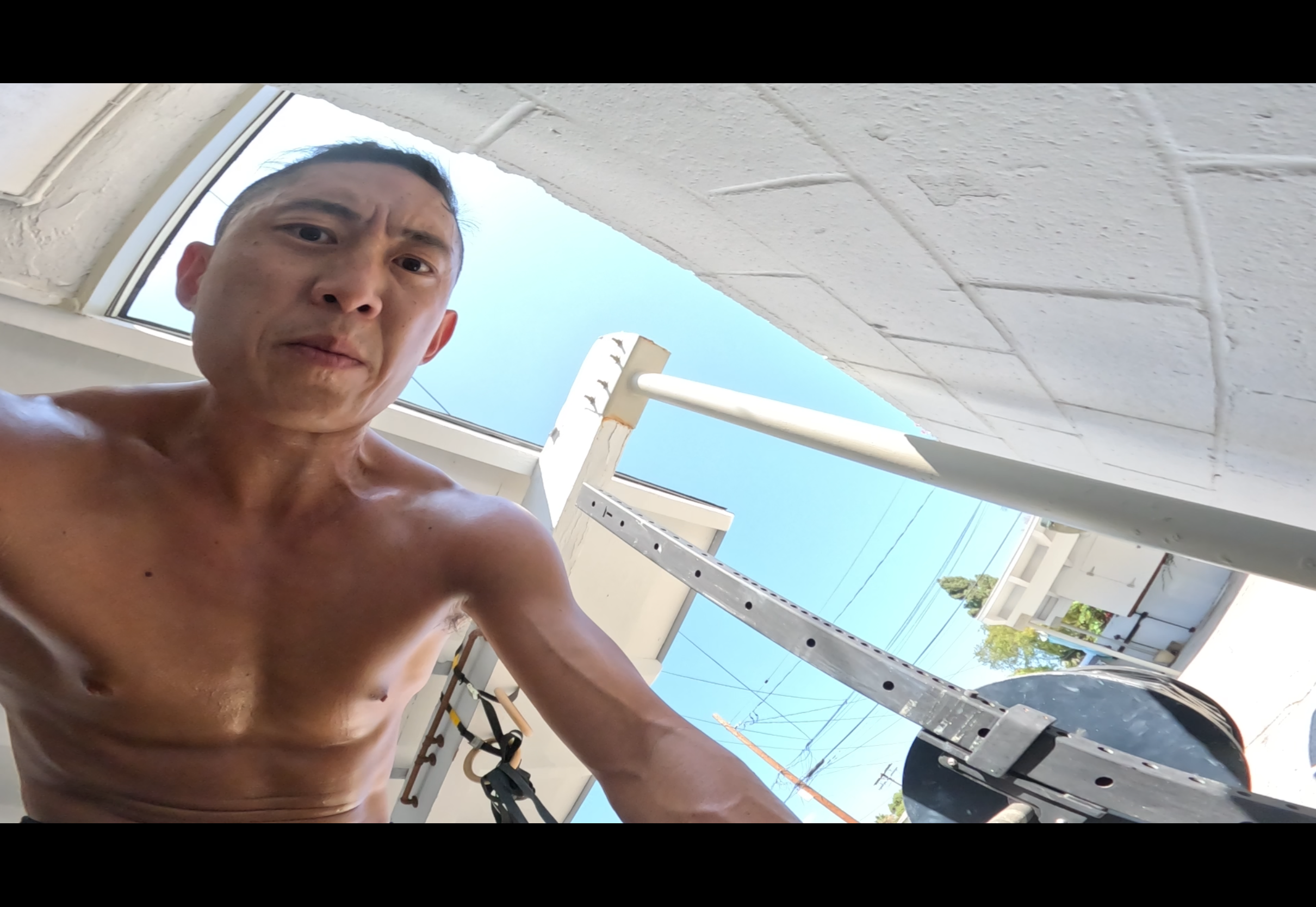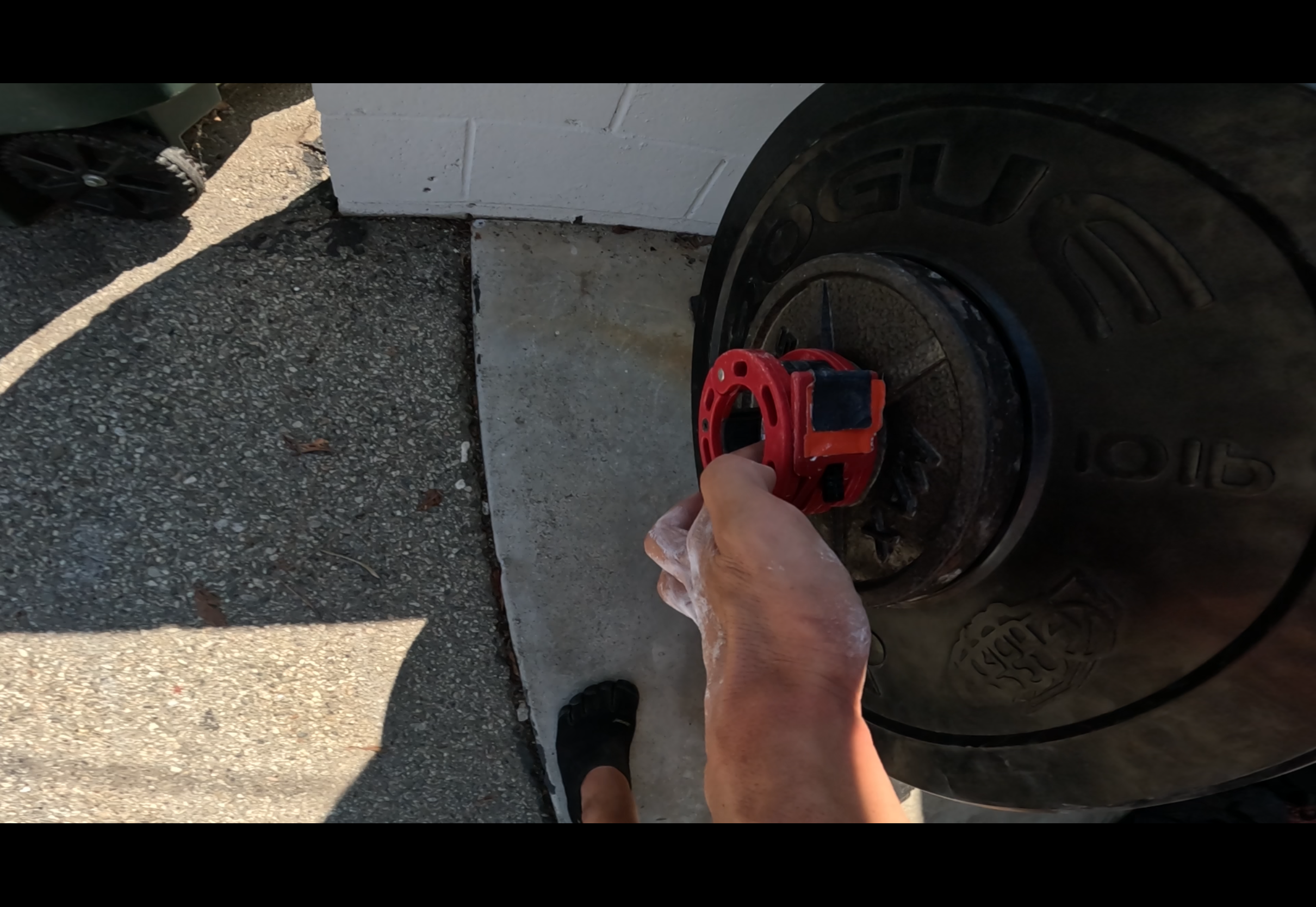Eric Kim’s 602 kg rack pull at 71 kg (≈8.5× bodyweight) is unprecedented in strength sports. For context, top strongmen in various classes typically deadlift far less relative to their size. For example, in the U90 kg class, Dan Benson (≈90 kg bodyweight) set a 401.5 kg deadlift world record in 2023 – about 4.5× his weight . In U105 kg, Luke Davies (105 kg) pulled 410 kg (3.9× bodyweight) . In the superheavy/140+ kg class, the all-time full deadlift record is 501 kg by Hafþór Björnsson (200 kg) – roughly 2.5× his weight . Legendary Eddie Hall (≈180–200 kg) deadlifted 500 kg (≈2.5–2.8× his weight) in 2016 . Even elite strongmen partial lifts (“Silver Dollar” deadlifts from knee height) top out around 4× bodyweight: Rauno Heinla (135 kg) pulled 580 kg (4.3× ) and Sean Hayes (140 kg) 560 kg (~4.0× ).
The table below summarizes these examples, comparing lifted weight to bodyweight:
| Lifter (BW class) | Lift (type) | Weight Lifted | Bodyweight | Ratio (Lift÷BW) |
| Eric Kim (71 kg, U80) | Rack pull (mid-thigh) | 602 kg | 71 kg | ~8.5× |
| Dan Benson (90 kg, U90) | Deadlift (full, 2023 WR) | 401.5 kg | 90 kg | ~4.5× |
| Luke Davies (105 kg) | Deadlift (full, 2019 WR) | 410 kg | 105 kg | ~3.9× |
| Rauno Heinla (135 kg) | Deadlift (Silver, 18″, 2022) | 580 kg | 135 kg | ~4.3× |
| Sean Hayes (140 kg) | Deadlift (Silver, 18″, 2022) | 560 kg | 140 kg | ~4.0× |
| Hafþór Björnsson (200 kg) | Deadlift (full, 2020 WR) | 501 kg | 200 kg | ~2.5× |
Above, “WR” denotes a world record lift. Kim’s 8.0–8.5× ratio far exceeds anything on record: even the best partial deadlifts by strongmen (≈4×) are only about half Kim’s pound-for-pound output.
Record-Setting Deadlifts and Partials (Context)
For further context, the all-time full deadlift world record is 501 kg (no straps, single-ply suit) by Hafþór Björnsson in 2020 . Before that, Eddie Hall famously deadlifted 500 kg in 2016 (the first over half-ton) . These lifts were done by 180–200 kg athletes, yielding only ~2.5–3× bodyweight ratios. Partial deadlift records are heavier in absolute terms but still modest relative to lifter size: Rauno Heinla’s 580 kg Silver Dollar Deadlift (from 18″/knee height) in 2022 and Sean Hayes’s 560 kg (2022) are the heaviest ever achieved. As the quote below notes, “previously, the pinnacle was 580 kg in an 18″ Silver Dollar Deadlift” – all of which are far below Kim’s 602 kg.
Kim’s lift thus shatters these benchmarks not just in absolute load but especially pound-for-pound. His 602 kg exceed Hafþór’s 501 kg full deadlift by over 100 kg and top Heinla’s 580 kg partial by 22 kg . Crucially, Kim weighs only ~71 kg, so his strength-to-weight ratio (~8.5×) is in “alien territory” – roughly double the ratio of even the strongest men to date (partial-rack deadlifts of ~4×).
<p align=”center”>
<strong>Table 1. Bodyweight-normalized strength of selected strongmen (deadlift/rack pull)</strong>
</p>
Biomechanical Force Analysis of the 602 kg Rack Pull
In Kim’s static rack pull, the primary forces are vertical. Assuming a static hold, the net acceleration ≈ 0, so ground reaction force (GRF) upward equals the sum of the lifter’s weight plus the bar weight downward.
- Vertical Ground Reaction: The downward force is (602 kg + 71 kg)×9.81 ≈ 6602 N. This must be balanced by the upward GRF from the floor, so GRF ≈ 6602 N. Normalizing per body mass (71 kg), this is about 93 N/kg – roughly 9.5 times Kim’s bodyweight in equivalent force. In other words, Kim’s legs and spine must support ≈9.5× his bodyweight upward to hold the bar static.
- Grip Force: The lifter’s hands apply an upward force to hold the bar. If we assume the bar’s entire weight is borne equally by two hands, each hand must exert ≈(602 kg×9.81)/2 ≈ 2953 N upward. That’s about 41.6 N/kg normalized (≈4.24× bodyweight per hand). In practical terms, each grip had to sustain ~300 kgf of pull. (In reality Kim reportedly used no straps or suit, so this enormous grip demand was met raw.)
- Spinal Compression: The bar’s weight also compresses the spine. At lockout, the bar load transmits through the shoulders/traps into the spine and hips. A rough estimate is that the spine sees on the order of the bar weight in compressive load. Thus the compression force ≈602×9.81 ≈ 5906 N (normalized ~83.2 N/kg, or ~8.5× bodyweight). (Some weight is carried by limbs, so this is approximate. Even so, ~5900 N compressive load is comparable to very heavy squats or deadlifts – a huge spinal load.)
- Force Vector and Torque: With the bar at mid-thigh and the lifter likely in a slightly bent posture, most of the bar force is vertical. If Kim’s torso leans forward by, say, 20–30° to clear the bar path, there will be a small horizontal component, but vertical gravity dominates. The main consequence is a hip/lower-back torque. For example, if the bar’s center is ~0.5 m in front of the lumbar joint, the torque = 5906 N × 0.5 m ≈ 2953 Nm. Normalized per body mass, that’s ~41.6 Nm/kg. This enormous moment must be countered by the lifter’s glutes and hamstrings. (If the bar were closer to the body, torque is less; if farther, more. Even with a modest 0.2 m lever arm, torque is still ~1180 Nm.)
- Work and Acceleration (optional): Since the lift is essentially static, net work done against gravity is negligible (the bar isn’t actually lifted through a height). If we imagine a modest upward displacement – say 0.5 m – then the work = 5906 N × 0.5 m ≈ 2953 J. Any slight acceleration at the start/end is minimal; the main challenge is simply sustaining the static forces.
These forces can be summarized as follows:
| Parameter | Value (absolute) | Value (normalized) |
| Ground Reaction (upward) | 6602 N | 92.99 N/kg (≈9.5× BW) |
| Grip Force (each hand) | 2953 N | 41.6 N/kg (≈4.2× BW) |
| Estimated Spinal Compression | 5906 N | 83.2 N/kg (≈8.5× BW) |
| Hip Torque (bar 0.5 m out) | 2953 Nm | 41.6 Nm/kg |
| Mechanical Work (0.5 m lift) | 2953 J | – |
In all cases, normalizing by body mass highlights how extraordinary Kim’s feat is. A GRF of 93 N/kg means he supports nearly 10× his own weight, and his grip and spine each shoulder loads on the order of 4–8× bodyweight. These values far exceed what typical strongmen achieve relative to size.
Figure 1 (below) (see Table 1 above) illustrates the pound-for-pound comparison: Eric Kim’s lift (8.5×) towers above even the best in each class (≈2.5–4.5×).
References: The figures for other strongmen’s lifts are drawn from official results and credible reports . Kim’s 602 kg rack pull was widely covered in the strength community and data-checked by experts . The above physics estimates use standard statics (F=mg, torque=F·d) to normalize forces per kg of body mass. All sources and data are cited.
